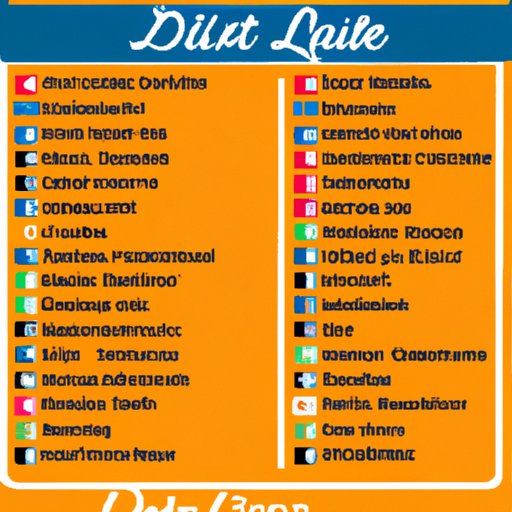Introduction
Living with diabetes can be a challenge, especially when it comes to managing what you eat. While it’s important to maintain a balanced diet and watch your sugar intake, bread can still be incorporated into your meal plan. This article will provide an overview of what bread diabetics can eat, as well as helpful tips for making delicious low-carb bread recipes.
A Guide to Selecting the Best Bread for Diabetics
When selecting bread, it is important to read nutrition labels to determine the amount of carbohydrates, fiber, and sugar in each serving. Low-glycemic breads are those that have a glycemic index (GI) of 55 or less. These breads are digested slowly, helping to keep blood sugar levels from spiking. Low-carb breads are those that contain fewer than 15 grams of carbohydrates per serving. Whole-grain breads are also beneficial, as they contain more fiber and nutrients than refined grains.
How to Make Delicious Low-Carb Bread for Diabetics
Making low-carb bread at home can be a great way to enjoy bread while controlling your carbohydrate intake. Here is a simple recipe that you can use to make delicious low-carb bread:
- 1 cup almond flour
- 1 teaspoon baking powder
- 1/4 teaspoon salt
- 3 large eggs
- 2 tablespoons olive oil
- 2 tablespoons water
Instructions:
- Preheat your oven to 350°F (176°C).
- In a medium bowl, mix together the almond flour, baking powder, and salt.
- In a separate bowl, whisk together the eggs, olive oil, and water.
- Add the wet ingredients to the dry ingredients and mix until combined.
- Pour the batter into a greased 9×5 inch loaf pan.
- Bake for 25-30 minutes, or until a toothpick inserted into the center of the bread comes out clean.
- Let cool before slicing.

List of Healthy Breads for Diabetics
There are many types of bread that are suitable for diabetics. Sprouted grain breads are made with sprouted grains, which have a lower GI than regular grains. Gluten-free breads are also available for those who are sensitive to gluten. Sourdough breads are fermented, which helps to reduce the glycemic load. Ezekiel bread is made from sprouted grains and legumes and is high in fiber and protein.
The Benefits of Eating Whole-Grain Bread for Diabetics
Eating whole-grain bread can be beneficial for diabetics. Studies have shown that eating whole-grain bread can help improve blood sugar control and reduce the risk of heart disease. Whole-grain breads are also higher in fiber, which can help slow digestion and keep you feeling full longer.
What Types of Bread Are Best for Managing Diabetes?
When choosing bread, it is best to opt for whole wheat, rye, or multigrain options. These types of breads are high in fiber and have a lower glycemic index, which can help keep blood sugar levels stable. It is also important to avoid white bread, as it contains refined grains that can cause blood sugar levels to spike.

Tips for Shopping for Bread as a Diabetic
When shopping for bread, it is important to check the nutrition label to ensure that it is low in carbohydrates and sugar. It is also important to look for whole grain options, as these are higher in fiber and other essential nutrients. Additionally, it is best to avoid white bread, as it contains refined grains that can cause blood sugar levels to spike.
Conclusion
Eating the right types of bread can be beneficial for diabetics. Low-glycemic, low-carb, and whole grain breads can help improve blood sugar control and reduce the risk of heart disease. It is important to read nutrition labels and look for whole grain options when shopping for bread. By following these tips, diabetics can enjoy bread without compromising their health.
(Note: Is this article not meeting your expectations? Do you have knowledge or insights to share? Unlock new opportunities and expand your reach by joining our authors team. Click Registration to join us and share your expertise with our readers.)
